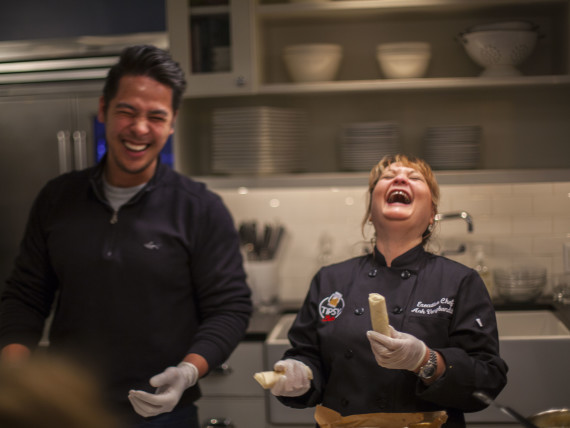Time for another crash course from the COOK kitchen! February is off to a great start – we’ve had some stellar chefs come in and demonstrate their skills to our guests. From vegan cooking advice to poaching eggs in duck fat, our kitchen has run the gamut these past few weeks. I’ve been taking diligent notes in order to share the best tips and tricks that I’ve heard since the beginning of the month… Read on!
Tip #1: Say What? Seitan!
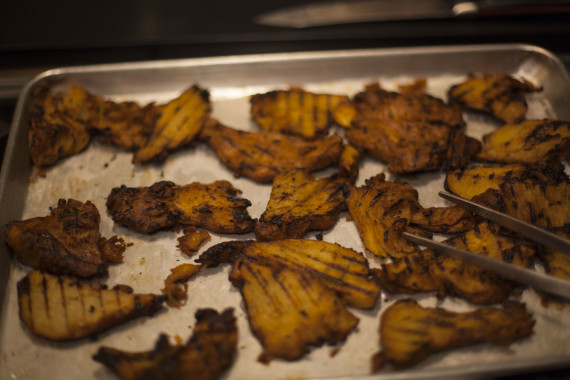
Vegans rejoice! Rachel Klein, owner and operator of the plant-based catering business and intimate restaurant Miss Rachel’s Pantry started off February by preparing a vegan Valentine’s dinner. She made a Pantry favorite, seitan, but with a slight twist – an agave finish for extra sweetness. I followed up with her to find out the best way to cook up this wheat protein known as seitan. Low in carbs and high in protein, eating seitan is a fantastic way for anyone to incorporate protein into their diet.
First, slice your seitan to about half an inch thick. Place the slices on a baking sheet with oil and salt and cook at around 350°F for about 10 minutes. This will prevent sticking when finishing later on the grill or frying pan. Take the seitan out of the oven and allow it to cool on a baking rack. Once cool, grill the strips over an open flame until slightly charred on the outside or alternatively fry in a pan over medium heat.
Tip #2: The Grass Is Greener
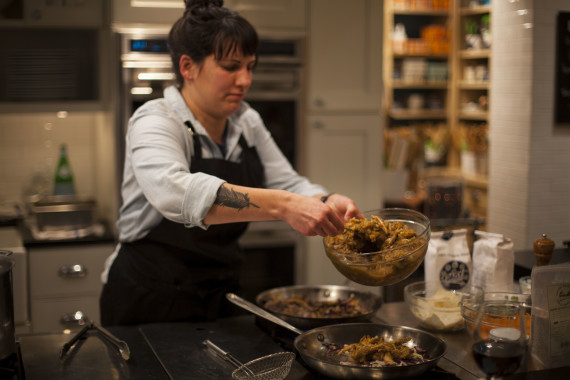
A hard 180 from vegan eats, Heather Thomason of Primal Supply brought a bounty of local meats, animal fats and dairy to COOK for her dinner with Chef Ned Maddock, who will lead the kitchen of P.J. Clarke’s Philadelphia location, opening this summer. The master butcher shared her knowledge with guests and explained how to incorporate flavorful meats and fats into a balanced diet. She went on to explain that the grass fed beef and butter she gets from local farmers provides greater nutrition than typical grain fed beef. After a recent cholesterol check, Heather said her HDL cholesterol levels are where they should be and her “bad” LDL cholesterol levels are low. So you could say that Heather Thomason is a walking example of how eating healthy fats and high-quality meat products in moderation can be beneficial to your health.
Tip #3: Pasta Pointers
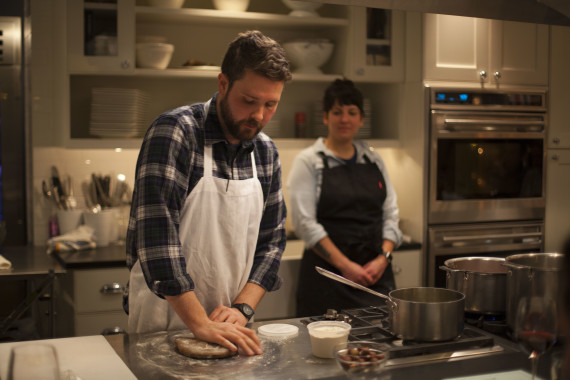
While Heather shared the meat of the matter, Ned Maddock dropped some pasta knowledge on us. As he prepped the water for his chestnut flour fettuccine, Ned poured a copious amount of salt into the large pot. One COOK guest was taken back by the amount of salt and asked Ned if he always uses that much salt, to which Ned replied “yes, your pasta water should taste like the ocean”. Ned went on to explain that you want your pasta water to be well-seasoned for two reasons: 1) pasta dough typically does not contain any salt and 2) the pasta water will eventually go into the sauce, adding not only starch but seasoning.
Tip #4: Preserve Those Lemons
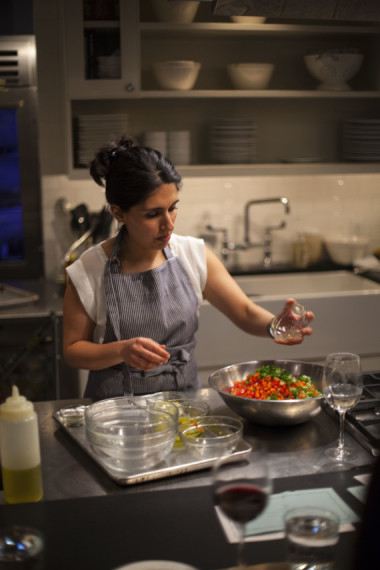
This one is so easy you have to try it! Reem Kassis, author of The Palestinian Table came into COOK to share her recipes, sign some books and expand some palates. One thing in particular caught the eye of guests – Reem’s preserved lemon spread. When asked how to preserve lemons, Reem simply replied, “salt and lemons.” Take your lemons, cut the tops and bottoms off, slice lengthwise in quarters, leaving the quarters attached at one end (like a blossom) and stuff them with salt. Leave them in a tightly sealed jar for a few weeks to pull the juices out and let them ferment. Preserved lemons are a great way to add a briny brightness to any dish.
Tip #5: Roll It Tight

Get ready for an egg roll wrapping lesson! Anh Vongbandith and Tory Keomanivong of Tipsy Bistro stopped by to introduce their new restaurant opening soon in University City. For dessert, they served a Thai banana cheesecake egg roll rolled in cinnamon sugar with a scoop of coconut sorbet. Anh was kind enough to give some guests a hands-on lesson in rolling these sweet egg rolls.
First, take thin egg roll wrappers and angle them diagonally so that a corner is facing you. Put the stuffing of your choice (roughly 2-3 tbsp) in the middle and leave about two inches on each side. Fold the top over the stuffing and tuck it under. Next, fold the sides over like an envelope. Wipe egg wash on the remaining wrapper area and continue to roll, making sure the egg washed areas stick, forming a tightly sealed roll. Freeze the rolls for at least 2 hours and they will be ready to fry! Ahn’s biggest word of advice was to keep your stuffing tight in the middle. Once the wrapper is loose the whole thing can fall apart, and nobody wants that!
Back to Blog

